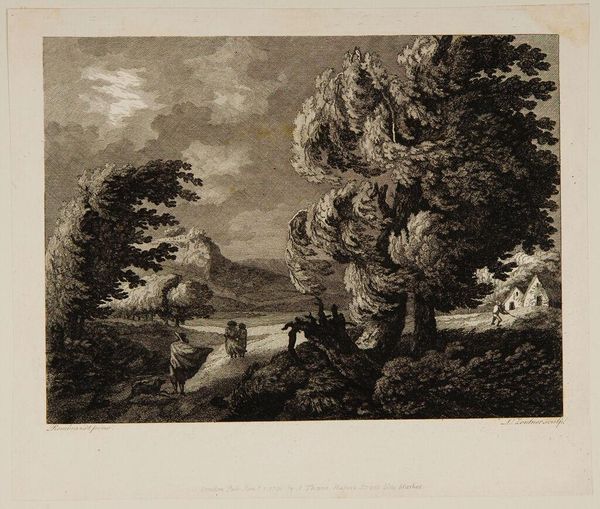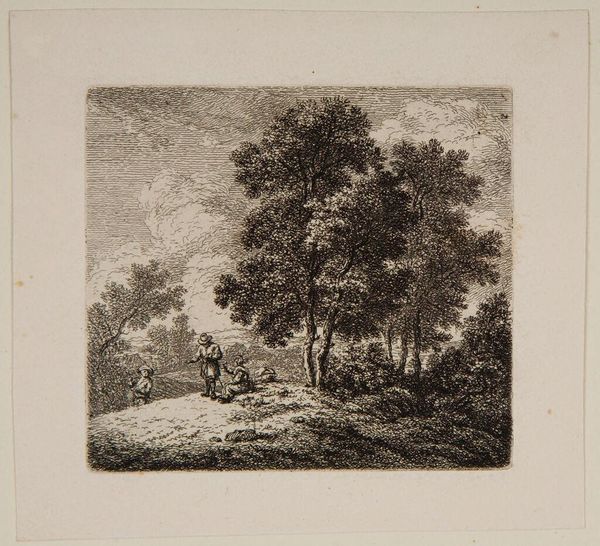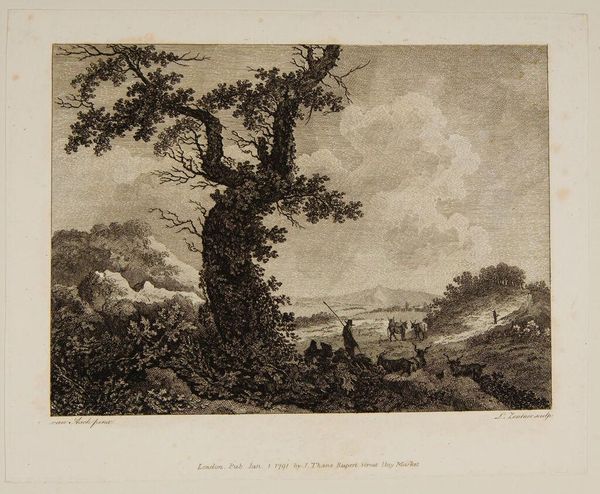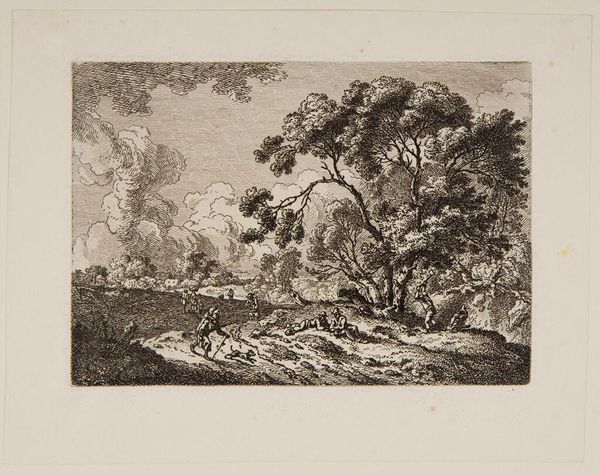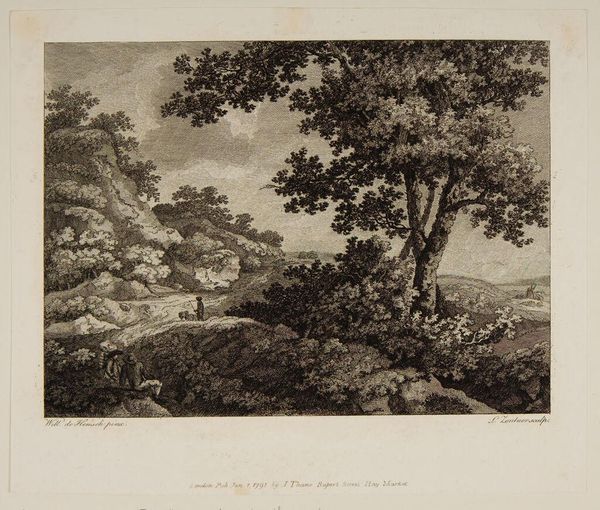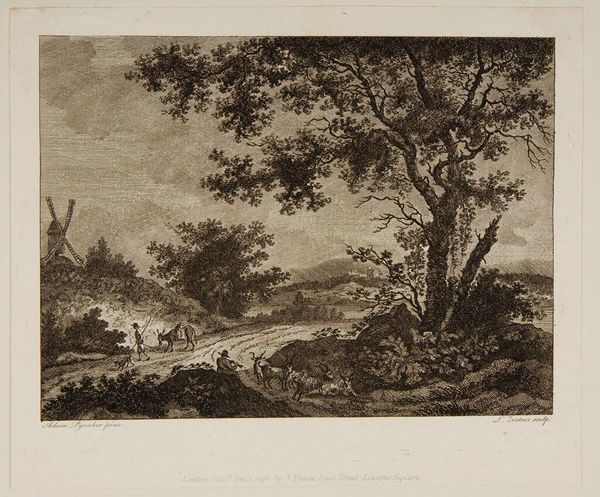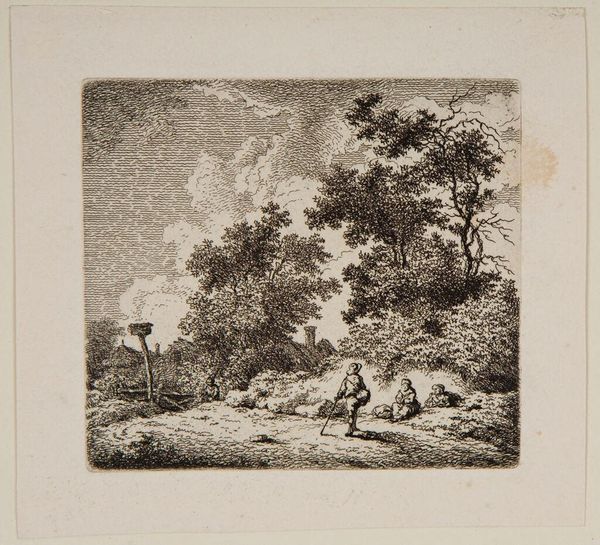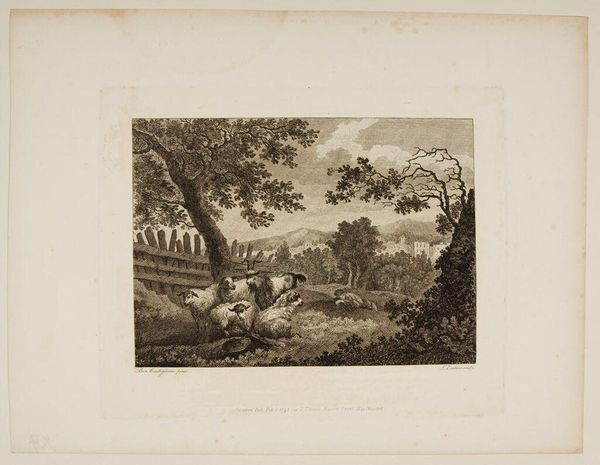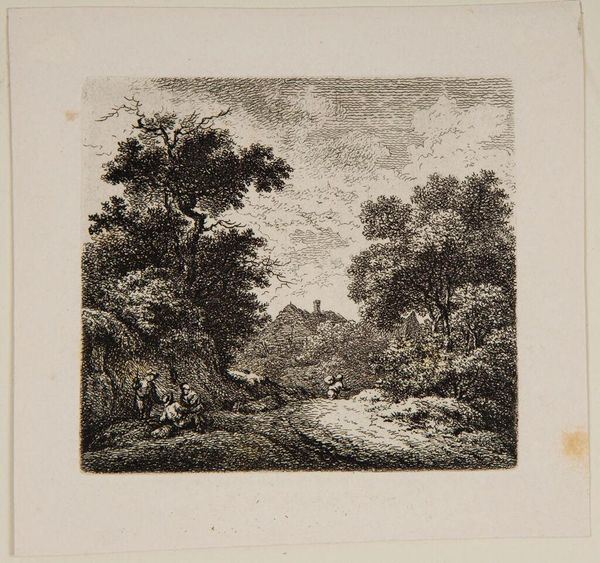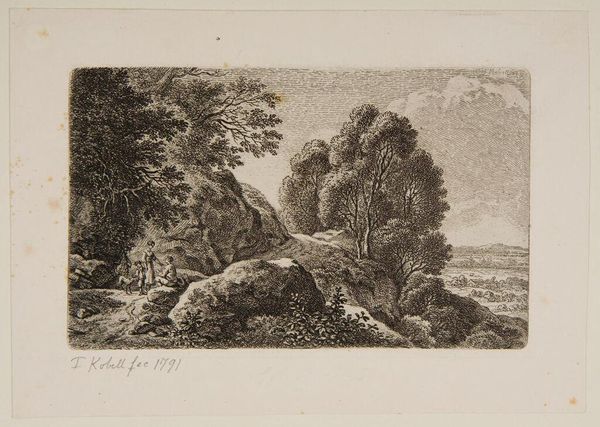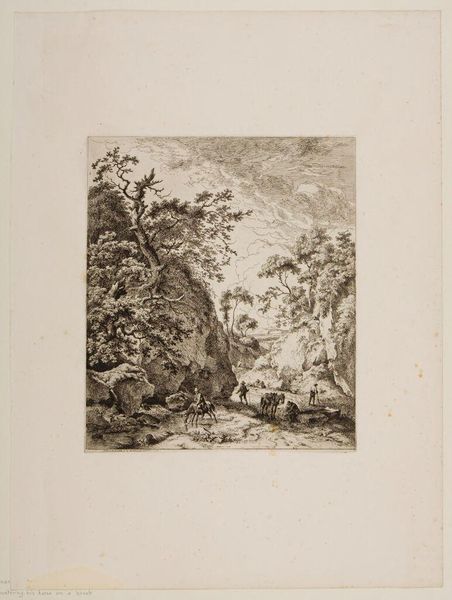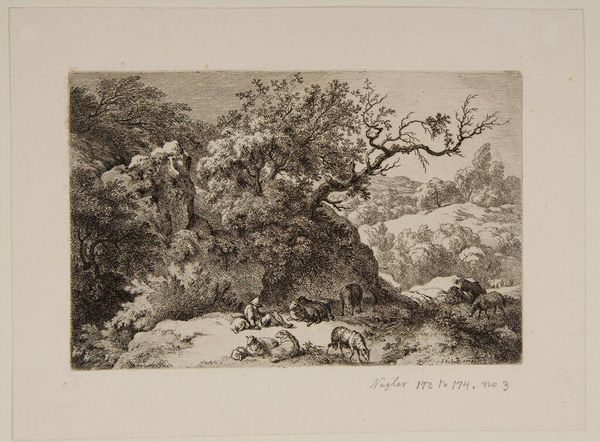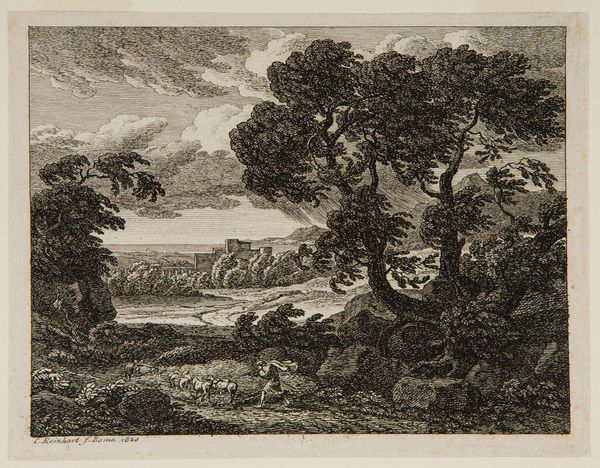
Copyright: CC0 1.0
Curator: Ferdinand Kobell's "Shepherd and Flock Crossing a Stream" presents us with a pastoral scene rendered in delicate detail. It's a window into 18th-century rural life. Editor: It's a rather somber window, isn't it? The moon hangs heavy, and the figures seem small against the looming trees. It's about the labor of shepherding, of moving livestock and product. Curator: Indeed. Kobell’s choice of etching allows for a focus on line and tone, drawing our attention to the textures of the landscape and the weight of the animals, showing the burden of their work. The print underscores the social context of this labor. Editor: And the print itself—consider its role. It's reproducible. It brings this idealized vision of labor to a wider audience, shaping perceptions of rural life and the relationship between society and nature. How the image is shared and interpreted is crucial. Curator: Absolutely. The very act of reproducing such a scene speaks to a desire to democratize art, placing it within reach of a broader public, and influencing how people understand labor practices. Editor: I agree. Looking at it now, I'm struck by the way it romanticizes while also documenting. There's a tension there between an idealized vision and a record of material realities. Curator: Ultimately, Kobell's work gives us a glimpse into the layered meanings embedded in what might initially appear to be a simple pastoral scene. Editor: And a reminder that images, even seemingly quaint ones, carry the weight of their social and historical context.
Comments
No comments
Be the first to comment and join the conversation on the ultimate creative platform.
